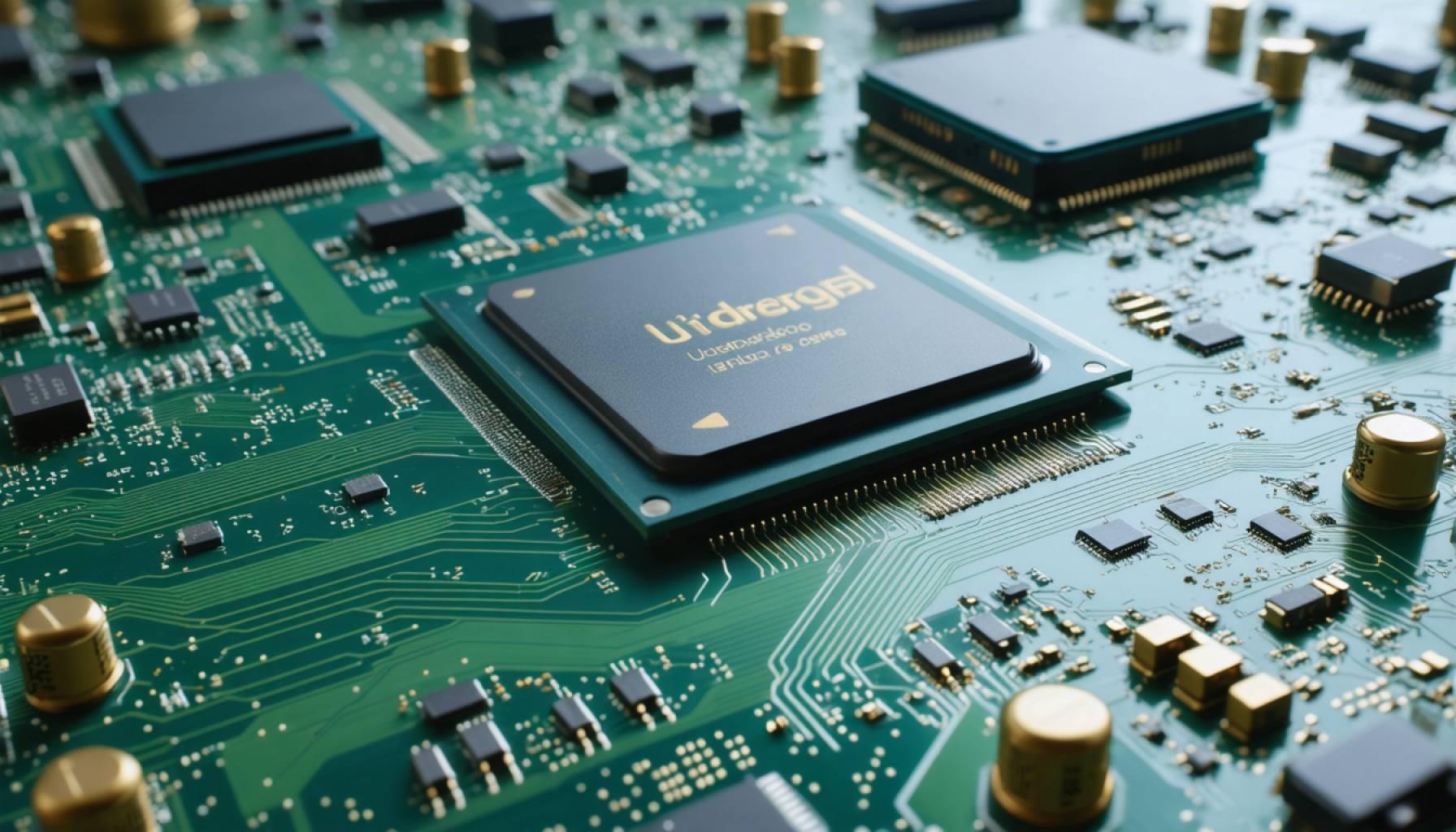
- AMD and Broadcom are quietly positioning themselves to challenge Nvidia in the AI semiconductor space.
- AMD is experiencing a 94% increase in data center revenue, driven by its cost-effective AI chips, essential for real-time AI inference tasks like cybersecurity and autonomous driving.
- AMD dominates central processing units (CPUs) in data centers, particularly with hyperscalers, maintaining a strong market position despite a temporary dip in gaming.
- Broadcom focuses on custom AI chips (ASICs) for tech giants, emphasizing performance and energy efficiency, exemplified by its collaboration with Alphabet on Tensor Processing Units (TPUs).
- Broadcom also advances in networking hardware and software ventures like VMware, crucial for AI infrastructure and cloud virtualization.
- Both companies exhibit adaptability and foresight, crucial for evolving with AI technology demands amid Nvidia’s market dominance.
In the shadow of Nvidia’s towering presence in the artificial intelligence sector, Advanced Micro Devices (AMD) and Broadcom are quietly plotting their ascension. These companies, though battered by recent market fluctuations, are sculpting unique paths within the competitive landscape of AI semiconductor stocks, each leveraging their distinctive strengths to carve out significant roles in the future of AI technology.
Advanced Micro Devices (AMD) is deftly navigating the AI wave, anchoring its sails on a swift current of innovation. AMD’s momentum in AI is underscored by a 94% surge in data center revenue, a testament to its nimble adaptation to market demands. While their standing in the GPU field might trail Nvidia’s dominance, AMD is positioning itself strategically for the inevitable shift towards AI inference. Its more cost-effective chips, compared to Nvidia’s, offer substantial utility for tasks like cybersecurity detection, autonomous driving, and personalized shopping suggestions. As AI models require more real-time processing, the need for rapid AI inference will grow, positioning AMD to seize a hefty share of the market.
Riding on their prowess in central processing units (CPUs), AMD shines brightly, reputed for its brain-like role in data centers, where its CPUs command a majority share, especially among hyperscalers—giants maintaining colossal data centers. Despite a lull in the gaming sector, foretold by an anticipated new Xbox and Playstation release in the late 2020s, AMD’s valuation remains attractive and robust, hinting at potential rebounds.
On another front, Broadcom emphasizes a bespoke approach, customizing AI chips known as ASICs for tech titans. Alphabet’s deployment of custom-designed Tensor Processing Units (TPUs), crafted by Broadcom, not only underscores the company’s engineering acumen but also propels it to the forefront of AI chip design. Unlike generic GPUs, Broadcom’s ASICs prioritize bespoke performance and energy efficiency for specific tasks, a growing demand among industry behemoths.
Broadcom’s efforts are not confined to chips alone. Its networking hardware developments cater to AI’s expanding infrastructure needs, where managing data flow becomes crucial as AI clusters swell. Moreover, Broadcom’s strategic foray into software, via VMware, generates a reciprocal growth channel through cloud virtualization.
The common thread binding AMD and Broadcom is their shared resolve to redefine AI’s semiconductor future. As they introduce innovation in their respective domains, investors are beckoned to consider the potential tide changes. While Nvidia continues to bask in the glow of its current dominance, these underdogs are positioning themselves for the day when AI demands evolve. The true takeaway: In the dynamic, ever-evolving arena of AI technology, adaptability and foresight are king, and these companies are ready to seize the crown.
Navigating the AI Chip Renaissance: AMD and Broadcom’s Strategic Moves
Advanced Micro Devices (AMD) and Broadcom: Rising Contenders in AI
In the shadow of Nvidia’s dominance in artificial intelligence (AI), AMD and Broadcom are quietly scaling the heights, leveraging unique strategies to carve out their niches in the competitive AI semiconductor landscape. Here’s a deeper dive into their strategies, strengths, and potential paths to success in AI technology.
AMD’s AI Strategy: A Deep Dive
1. Strategic Positioning in AI Inference:
AMD is gearing up to capture a significant segment in the AI inference market. As AI models grow increasingly complex, the demand for real-time processing will surge, placing AMD’s cost-effective chips in a favorable position, especially for applications like:
– Cybersecurity detection
– Autonomous vehicle processing
– Real-time shopping recommendations
2. Momentum in Data Centers:
With a remarkable 94% increase in data center revenue, AMD demonstrates its ability to adapt swiftly to market demands. AMD’s CPUs are integral to data centers, particularly for hyperscale computing, which necessitates enormous processing power.
3. Prospects in Gaming Consoles:
While currently experiencing a slump in gaming, largely due to delayed cycles of new console releases, AMD could see a resurgence with anticipated launches of new Xbox and PlayStation consoles in the late 2020s.
Broadcom’s AI Chip Customization: Unpacking ASICs
1. Custom AI Chips (ASICs):
Broadcom has honed its focus on custom ASICs (Application-Specific Integrated Circuits), emphasizing engineering expertise tailored for tech giants. By helping design Alphabet’s Tensor Processing Units (TPUs), Broadcom showcases capabilities that offer:
– Elevated performance
– Enhanced energy efficiency
2. Expansion in Networking Solutions:
Broadcom isn’t just a chip designer; it’s an infrastructure innovator. Its networking devices are vital as AI requires robust infrastructure to manage data flows efficiently.
3. Ventures in Software through VMware:
Broadcom strategically taps into software development, particularly in virtualization through VMware, providing an adjacent growth channel that complements its hardware innovations.
Market Insights and Trends
1. Industry Trends:
– The AI semiconductor market is projected to reach new heights, driven by advancements in AI and machine learning technologies across various sectors, including automotive, healthcare, and finance.
– A shift towards specialized chipsets like ASICs and FPGAs (Field-Programmable Gate Arrays) to optimize AI workloads.
2. Competitive Landscape:
– With Nvidia’s current leadership, AMD and Broadcom are leveraging their unique strengths to capture underserved segments.
– Both companies are banking on adaptability to upcoming tech demands, such as real-time AI processing and specialized computing.
Key Questions Answered
1. Why are AMD and Broadcom considered underdogs?
– They currently hold smaller market shares compared to Nvidia but exhibit strong potential through innovative strategies and technology adaptations.
2. What opportunities exist for investors?
– With the growth of AI technology across industries, both companies present lucrative investment opportunities due to their strategic positioning and potential for market share expansion.
Actionable Recommendations
For Investors:
– Diversify portfolios by considering AMD and Broadcom for their growth potential in the AI chip market.
– Monitor industry trends and company earnings reports to align investments with technological advancements.
Quick Tips:
– Stay informed on AI developments and chip technology breakthroughs.
– Investigate AI infrastructure demands which could influence AMD and Broadcom’s future trajectories.
In the dynamic world of AI, companies like AMD and Broadcom are not just competing; they are redefining their roles through strategic foresight and innovative engineering. Explore AMD and Broadcom for the latest on their advances in AI.



